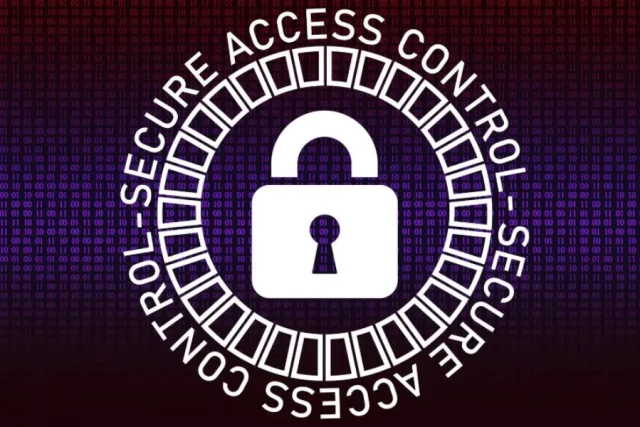Do you run a business and have concerns about how to protect your company in the digital age? You’re not alone. As we continue to move further into the digital age, businesses are faced with an increasing number of cybersecurity threats. Hackers are becoming more sophisticated in their attacks, and it is more important than ever for businesses to take steps to protect themselves. In this article, we will discuss how businesses can respond to cybersecurity issues. Let’s get started.
Cybersecurity Analytics
If you want to properly defend your business against digital threats, you need to know what those threats are. Cybersecurity analytics allows businesses to collect and analyze data about potential cyberattacks. This cybersecurity information can help businesses identify trends and vulnerabilities to take steps to protect themselves. Ensure that you do this for your business to ensure that everything is secure.
To ensure that you get the best possible data, working with a reputable cyber-analytics firm is essential. This is not something you want to try to do on your own. A good analytics firm will have the experience and resources necessary to collect and analyze data properly. You can do so by getting recommendations, conducting security audits, and monitoring your company’s digital footprint. However, before you enlist professional help, make sure you spend some time comparing cybersecurity services offered by different companies. Check their track record and reviews to make sure you’re getting the best service.
Implementing Cybersecurity Policies And Procedures
Once you have data about potential threats, you can implement policies and procedures to protect your business. These policies should be designed to protect your data and systems from unauthorized access or destruction. They should also be designed to ensure that your employees are adequately trained in cybersecurity best practices.
Some of the policies and procedures you may want to consider include:
- Creating a security policy that outlines how your company will handle data and systems security.
- Implementing access control measures, such as user IDs and passwords to protect sensitive data.
- Encrypting data to make it more difficult for hackers to access it.
- Educating employees about cybersecurity threats and best practices.
- Creating a process for responding to potential security breaches.
Monitoring and Updating Your Cybersecurity Strategy
Once you have implemented policies and procedures, it is essential to monitor them on an ongoing basis. Cybersecurity threats are constantly changing, and your policies and procedures need to change with them. Be sure to review your data analytics regularly to identify new trends and vulnerabilities.
Also, be sure to update your policies and procedures as needed to ensure that they are effective against the latest threats. Some of the ways you can review and update your cybersecurity strategy include regularly reviewing data analytics to identify new threats, updating policies and procedures as needed to address new threats, and educating employees on the latest security threats and best practices. You can also monitor your company’s digital footprint for signs of potential attacks.
Keep Software And Systems Updated
One of the best ways to protect your business against cyberattacks is to keep your software and systems up to date. Hackers are constantly finding new ways to exploit vulnerabilities in outdated software. By keeping your software and systems up-to-date, you can help ensure that these vulnerabilities are patched and that your data is protected.
To keep your software and systems up-to-date, you need to have a good patch management system in place. This system should be designed to automatically install security updates as soon as they are released. You should also test new updates before installing them to ensure that they do not introduce new vulnerabilities. It is a significant part of guides to vendor risk management.
Ensure Endpoint Protection
Another essential part of protecting your business against cyberattacks is to ensure endpoint protection. Endpoints are devices that connect to your networks, such as laptops, smartphones, and servers. You can use these devices to access sensitive data and systems, so protecting them from potential attacks is essential.
There are several ways you can protect endpoint devices, such as installing security software, using strong passwords, and restricting access to sensitive data. You should also ensure that your endpoints are properly configured and that they are kept up-to-date with the latest security patches. You can also limit the number of devices connecting to your network to reduce the risk of a breach.
Always Backup Data
One of the most important things you can do to protect your business against cyberattacks is always to back up data. This data can be used to restore your systems if they are compromised. There are several different ways you can backup data, such as using cloud storage, external hard drives, or flash drives.
It would be best to consider encrypting your backups to protect them from potential attacks. This will help ensure that your data is safe even if your backup system is compromised. Also, encrypting ensures that your data is protected even if your backups are lost or stolen. No one will be able to access your data without the proper encryption key.
Install A Firewall
Another important step you can take to protect your business against cyberattacks is to install a firewall. A firewall is a system that helps to block unauthorized access to your network. It can also help to detect and prevent attacks.
When choosing a firewall, you need to consider the needs of your business. There are many different types of firewalls available, so you need to choose one that will be effective against the types of attacks you are most likely to encounter. You also need to make sure that your firewall is configured correctly and kept up-to-date with the latest security patches.
Monitor Your Network
To effectively protect your business against cyberattacks, you need to continuously monitor your network for signs of potential attacks. This includes monitoring for unusual activity, such as strange traffic patterns or new devices that have been added to your network.
You should also regularly review your security logs to look for suspicious activity. If you notice anything unusual, you should investigate further to determine a threat. You can work with professionals on this if you are unsure how to proceed.
Cybersecurity is a big concern for businesses of all sizes in the digital age. You can take several steps to protect your business, such as keeping your software and systems up-to-date, ensuring endpoint protection, always backing up data, installing a firewall, and monitoring your network. Taking these steps will help you reduce the risk of a cyberattack and help you keep your business safe.














